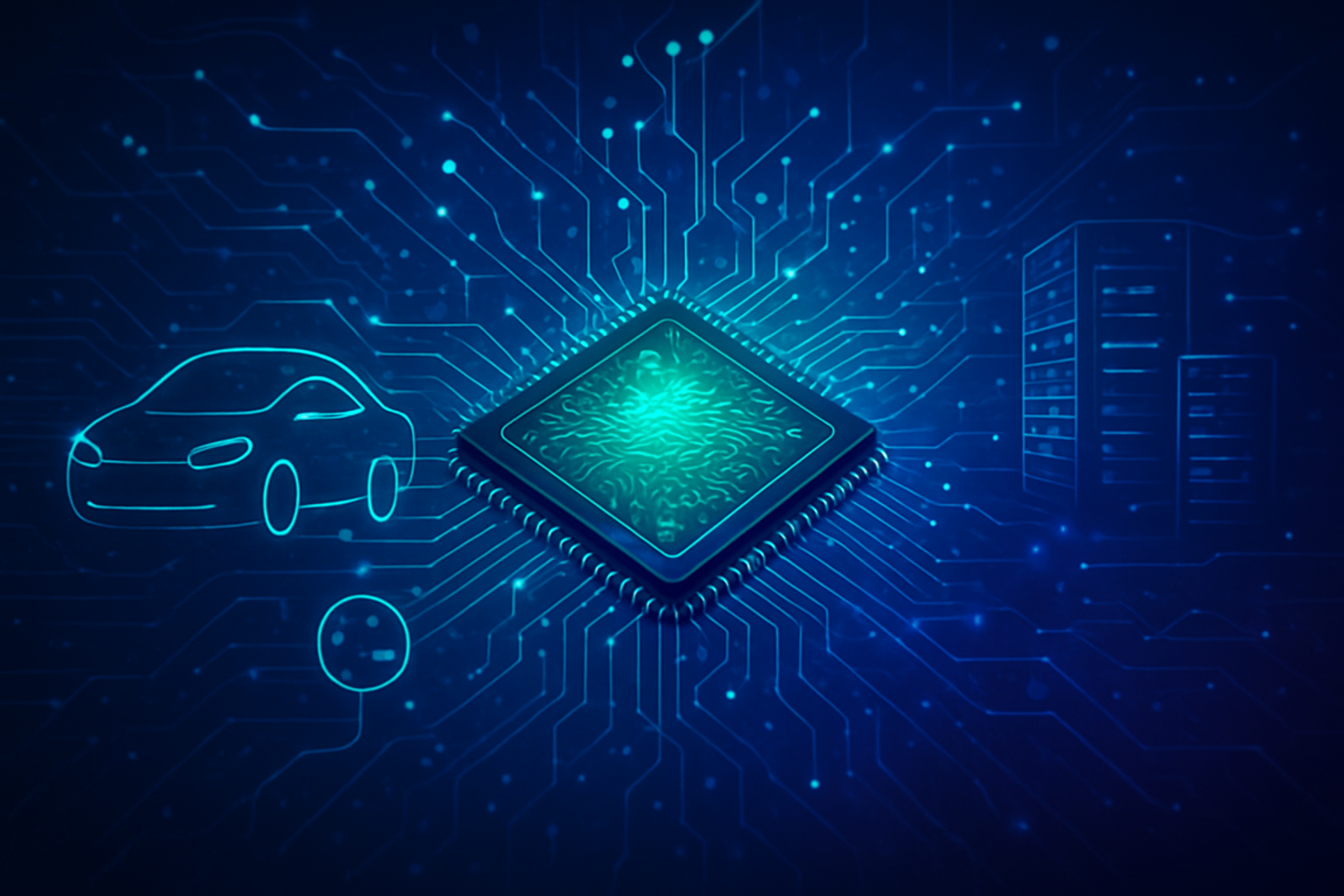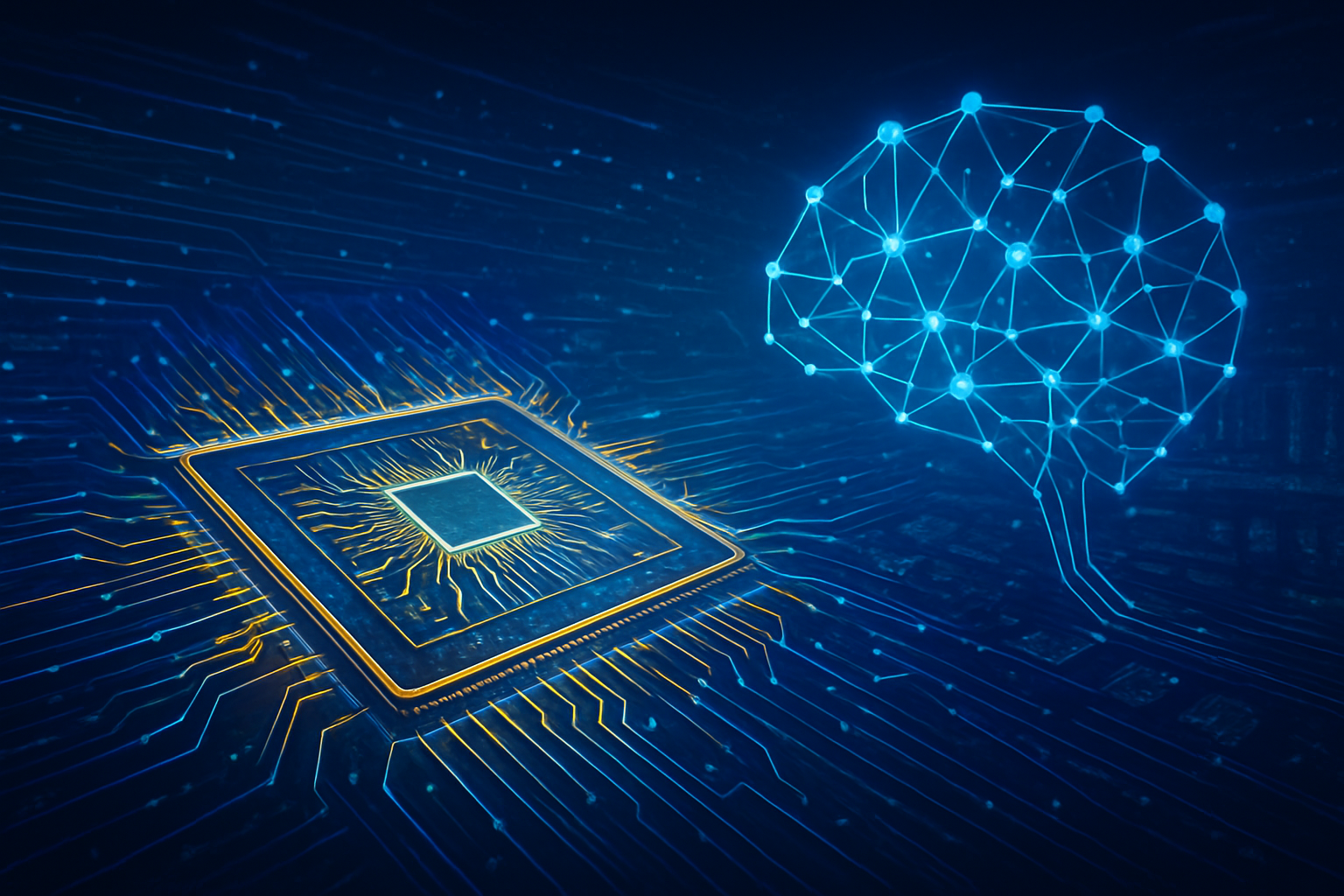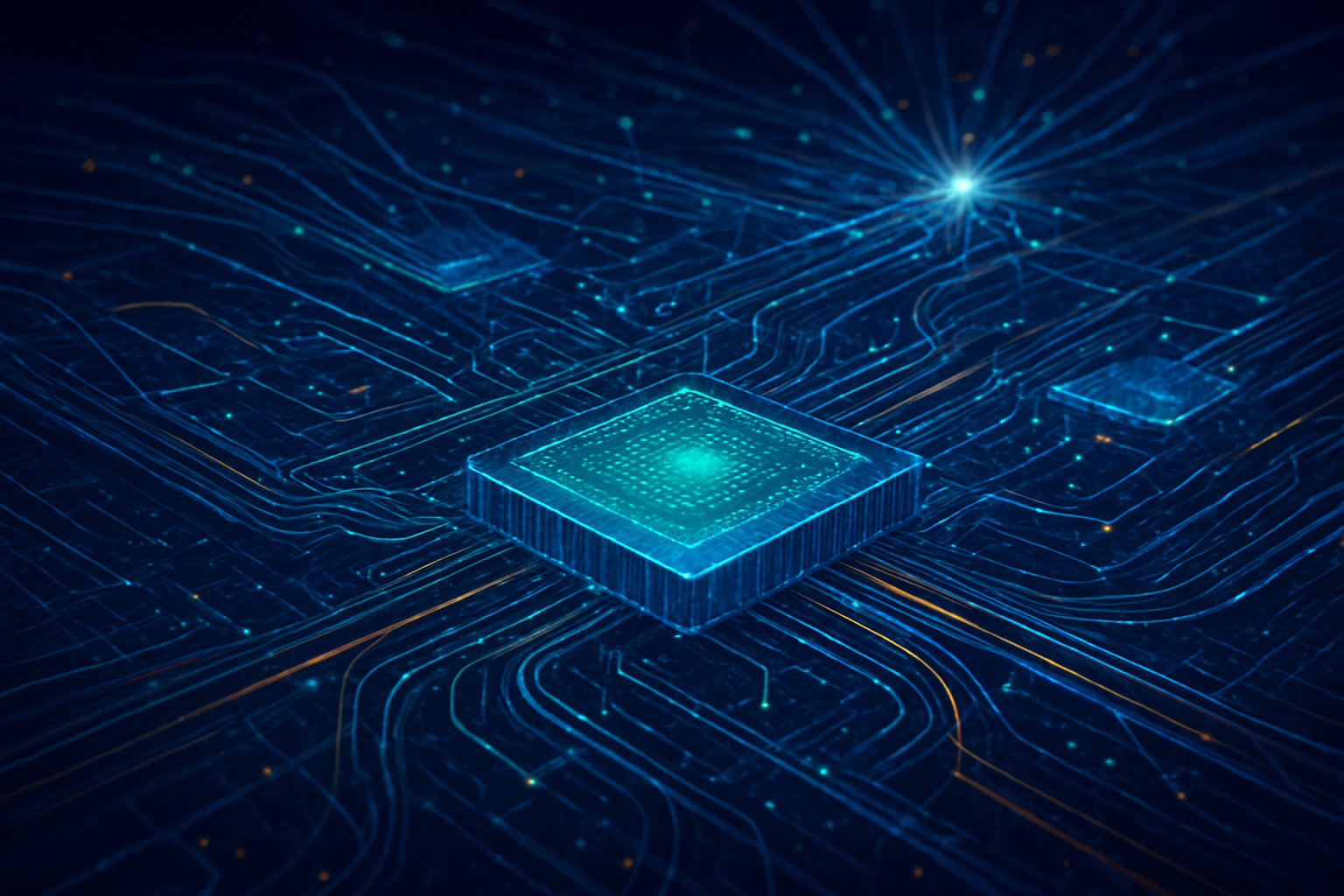The relentless march of artificial intelligence continues to redefine the technological landscape, extending its profound influence far beyond software algorithms to permeate the very fabric of corporate performance and stock market valuations. In an era where AI is no longer a futuristic concept but a present-day imperative, companies that strategically embed AI into their operations or provide critical AI infrastructure are witnessing unprecedented growth. This transformative power is vividly illustrated by the recent surge in the stock of Coherent Corp. (NYSE: COHR), a key enabler in the AI supply chain, whose trajectory underscores AI's undeniable role as a primary driver of profitability and market capitalization.
AI's impact spans increased productivity, enhanced decision-making, and innovative revenue streams, with generative AI alone projected to add trillions to global corporate profits annually. Investors, recognizing this colossal potential, are increasingly channeling capital into AI-centric enterprises, leading to significant market shifts. Coherent's remarkable performance, driven by surging demand for its high-speed optical components essential for AI data centers, serves as a compelling case study of how fundamental contributions to the AI ecosystem translate directly into robust financial returns and elevated market confidence.
Coherent Corp.'s AI Arsenal: Powering the Data Backbone of Intelligent Systems
Coherent Corp.'s (NYSE: COHR) recent stock surge is not merely speculative; it is firmly rooted in the company's pivotal role in providing the foundational hardware for the burgeoning AI industry. At the heart of this success are Coherent's advanced optical transceivers, which are indispensable for the high-bandwidth, low-latency communication networks required by modern AI data centers. The company has seen a significant boost from its 800G Ethernet transceivers, which have become a standard for AI platforms, with revenues from this segment experiencing a near 80% sequential increase. These transceivers are critical for connecting the vast arrays of GPUs and other AI accelerators that power large language models and complex machine learning tasks.
Looking ahead, Coherent is already at the forefront of the next generation of AI infrastructure with initial revenue shipments of its 1.6T transceivers. These cutting-edge components are designed to meet the even more demanding interconnect speeds required by future AI systems, positioning Coherent as an early leader in this crucial technological evolution. The company is also developing 200G/lane VCSELs (Vertical Cavity Surface Emitting Lasers) and has introduced groundbreaking DFB-MZ (Distributed Feedback Laser with Mach Zehnder) technology. This DFB-MZ laser, an InP CW laser monolithically integrated with an InP Mach Zehnder modulator, is specifically engineered to enable 1.6T transceivers to achieve reaches of up to 10 km, significantly enhancing the flexibility and scalability of AI data center architectures.
Beyond connectivity, Coherent addresses another critical challenge posed by AI: heat management. As AI chips become more powerful, they generate unprecedented levels of heat, necessitating advanced cooling solutions. Coherent's laser-based cooling technologies are gaining traction, exemplified by partnerships with hyperscalers like Google Cloud (NASDAQ: GOOGL), demonstrating its capacity to tackle the thermal management demands of next-generation AI systems. Furthermore, the company's expertise in compound semiconductor technology and its vertically integrated manufacturing process for materials like Silicon Carbide (SiC) wafers, used in high-power density semiconductors, solidify its strategic position in the AI supply chain, ensuring both cost efficiency and supply security. Initial reactions from the AI research community and industry experts have been overwhelmingly positive, with analysts like JPMorgan highlighting AI as the primary driver for a "bull case" for Coherent as early as 2023.
The AI Gold Rush: Reshaping Competitive Dynamics and Corporate Fortunes
Coherent Corp.'s (NYSE: COHR) trajectory vividly illustrates a broader phenomenon: the AI revolution is creating a new hierarchy of beneficiaries, reshaping competitive dynamics across the tech industry. Companies providing the foundational infrastructure for AI, like Coherent with its advanced optical components, are experiencing unprecedented demand. This extends to semiconductor giants such as NVIDIA Corp. (NASDAQ: NVDA), whose GPUs are the computational backbone of AI, and Broadcom Inc. (NASDAQ: AVGO), a key supplier of application-specific integrated circuits (ASICs). These hardware providers are witnessing soaring valuations and robust revenue growth as the global appetite for AI computing power intensifies.
The impact ripples through to the hyperscale cloud service providers, including Microsoft Corp. (NASDAQ: MSFT) with Azure, Amazon.com Inc. (NASDAQ: AMZN) with AWS, and Alphabet Inc.'s (NASDAQ: GOOGL) Google Cloud. These tech giants are reporting substantial increases in cloud revenues directly attributable to AI-related demand, as businesses leverage their platforms for AI development, training, and deployment. Their strategic investments in building vast AI data centers and even developing proprietary AI chips (like Google's TPUs) underscore the race to control the essential computing resources for the AI era. Beyond infrastructure, companies specializing in AI software, platforms, and integration services, such as Accenture plc (NYSE: ACN), which reported a 390% increase in GenAI services revenue in 2024, are also capitalizing on this transformative wave.
For startups, the AI boom presents a dual landscape of immense opportunity and intense competition. Billions in venture capital funding are pouring into new AI ventures, particularly those focused on generative AI, leading to a surge in innovative solutions. However, this also creates a "GenAI Divide," where widespread experimentation doesn't always translate into scalable, profitable integration for enterprises. The competitive landscape is fierce, with startups needing to differentiate rapidly against both new entrants and the formidable resources of tech giants. Furthermore, the rising demand for electricity to power AI data centers means even traditional energy providers like NextEra Energy Inc. (NYSE: NEE) and Constellation Energy Corporation (NASDAQ: CEG) are poised to benefit from this insatiable thirst for computational power, highlighting AI's far-reaching economic influence.
Beyond the Balance Sheet: AI's Broader Economic and Societal Reshaping
The financial successes seen at companies like Coherent Corp. (NYSE: COHR) are not isolated events but rather reflections of AI's profound and pervasive influence on the global economy. AI is increasingly recognized as a new engine of productivity, poised to add trillions of dollars annually to global corporate profits and significantly boost GDP growth. It enhances operational efficiencies, refines decision-making through advanced data analysis, and catalyzes the creation of entirely new products, services, and markets. This transformative potential positions AI as a general-purpose technology (GPT), akin to electricity or the internet, promising long-term productivity gains, though the pace of its widespread adoption and impact remains a subject of ongoing analysis.
However, this technological revolution is not without its complexities and concerns. A significant debate revolves around the potential for an "AI bubble," drawing parallels to the dot-com era of 2000. While some, like investor Michael Burry, caution against potential overvaluation and unsustainable investment patterns among hyperscalers, others argue that the strong underlying fundamentals, proven business models, and tangible revenue generation of leading AI companies differentiate the current boom from past speculative bubbles. The sheer scale of capital expenditure pouring into AI infrastructure, primarily funded by cash-rich tech giants, suggests a "capacity bubble" rather than a purely speculative valuation, yet vigilance remains crucial.
Furthermore, AI's societal implications are multifaceted. While it promises to create new job categories and enhance human capabilities, there are legitimate concerns about job displacement in certain sectors, potentially exacerbating income inequality both within and between nations. The United Nations Development Programme (UNDP) warns that unmanaged AI could widen economic divides, particularly impacting vulnerable groups if nations lack the necessary infrastructure and governance. Algorithmic bias, stemming from unrepresentative datasets, also poses risks of perpetuating and amplifying societal prejudices. The increasing market concentration, with a few hyperscalers dominating the AI landscape, raises questions about systemic vulnerabilities and the need for robust regulatory frameworks to ensure fair competition, data privacy, and ethical development.
The AI Horizon: Exponential Growth, Emerging Challenges, and Expert Foresight
The trajectory set by companies like Coherent Corp. (NYSE: COHR) provides a glimpse into the future of AI infrastructure, which promises exponential growth and continuous innovation. In the near term (1-5 years), the industry will see the widespread adoption of even more specialized hardware accelerators, with companies like Nvidia Corp. (NASDAQ: NVDA) and Advanced Micro Devices Inc. (NASDAQ: AMD) consistently releasing more powerful GPUs. Photonic networking, crucial for ultra-fast, low-latency communication in AI data centers, will become increasingly vital, with Coherent's 1.6T transceivers being a prime example. The focus will also intensify on edge AI, processing data closer to its source, and developing carbon-efficient hardware to mitigate AI's burgeoning energy footprint.
Looking further ahead (beyond 5 years), revolutionary architectures are on the horizon. Quantum computing, with its potential to drastically reduce the time and resources for training large AI models, and neuromorphic computing, which mimics the brain's energy efficiency, could fundamentally reshape AI processing. Non-CMOS processors and System-on-Wafer technology, enabling wafer-level systems with the power of entire servers, are also expected to push the boundaries of computational capability. These advancements will unlock unprecedented applications across healthcare (personalized medicine, advanced diagnostics), manufacturing (fully automated "dark factories"), energy management (smart grids, renewable energy optimization), and even education (intelligent tutoring systems).
However, these future developments are accompanied by significant challenges. The escalating power consumption of AI, with data centers projected to double their share of global electricity consumption by 2030, necessitates urgent innovations in energy-efficient hardware and advanced cooling solutions, including liquid cooling and AI-optimized rack systems. Equally critical are the ethical considerations: addressing algorithmic bias, ensuring transparency and explainability in AI decisions, safeguarding data privacy, and establishing clear accountability for AI-driven outcomes. Experts predict that AI will add trillions to global GDP over the next decade, substantially boost labor productivity, and create new job categories, but successfully navigating these challenges will be paramount to realizing AI's full potential responsibly and equitably.
The Enduring Impact: AI as the Defining Force of a New Economic Era
In summary, the rapid ascent of Artificial Intelligence is unequivocally the defining technological and economic force of our time. The remarkable performance of companies like Coherent Corp. (NYSE: COHR), driven by its essential contributions to AI infrastructure, serves as a powerful testament to how fundamental technological advancements translate directly into significant corporate performance and stock market valuations. AI is not merely optimizing existing processes; it is creating entirely new industries, driving unprecedented efficiencies, and fundamentally reshaping the competitive landscape across every sector. The sheer scale of investment in AI hardware, software, and services underscores a broad market conviction in its long-term transformative power.
This development holds immense significance in AI history, marking a transition from theoretical promise to tangible economic impact. While discussions about an "AI bubble" persist, the strong underlying fundamentals, robust revenue growth, and critical utility of AI solutions for leading companies suggest a more enduring shift than previous speculative booms. The current AI era is characterized by massive, strategic investments by cash-rich tech giants, building out the foundational compute and connectivity necessary for the next wave of innovation. This infrastructure, exemplified by Coherent's high-speed optical transceivers and cooling solutions, is the bedrock upon which future AI capabilities will be built.
Looking ahead, the coming weeks and months will be crucial for observing how these investments mature and how the industry addresses the accompanying challenges of energy consumption, ethical governance, and workforce transformation. The continued innovation in areas like photonic networking, quantum computing, and neuromorphic architectures will be vital. As AI continues its relentless march, its profound impact on corporate performance, stock market dynamics, and global society will only deepen, solidifying its place as the most pivotal technological breakthrough of the 21st century.
This content is intended for informational purposes only and represents analysis of current AI developments.
TokenRing AI delivers enterprise-grade solutions for multi-agent AI workflow orchestration, AI-powered development tools, and seamless remote collaboration platforms.
For more information, visit https://www.tokenring.ai/.









